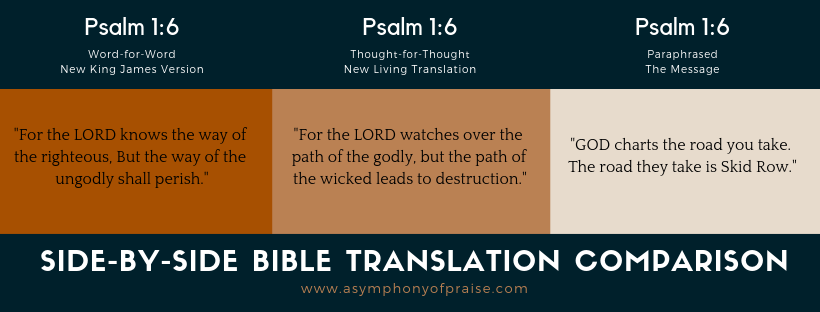All You Need to Know About Bible Translations.
Selecting a Bible translation can be daunting due to the numerous options available, including the King James Version (KJV), New King James Version (NKJV), New International Version (NIV), New Living Translation (NLT), and Message (MSG). This guide will assist you in identifying the most suitable translation for your needs.
One of the best ways to spend time with Jesus is getting to know His voice in His word. We hope this guide will help you pick the best Bible translation for you!
A (VERY BRIEF) History of Translation.
It’s crucial to recognize that the original language of the Bible wasn’t English. The Old Testament was penned in Hebrew, while some Aramaic and the New Testament were written in Greek. Every Bible we read today is an attempt to accurately convey the true essence of those languages. It’s important to note that no Bible, not even the renowned King James Version, is entirely 100% accurate.
As a non-historian, I believe delving into a comprehensive history of Bible translation would be beyond the scope of this article. However, if you’re interested in learning more about the origins of our modern Bible, I recommend reading this excellent resource.
TRANSLATION CATEGORIES.
Word-for-Word Translation
A word-for-word translation seeks to accurately render the original Hebrew, Aramaic, and Greek Scriptures as closely as possible. These versions strive to preserve the structure and meaning of the original text. Popular examples of word-for-word translations include the King James Version (KJV), New King James Version (NKJV), and English Standard Version (ESV).
As noted by Norman Geisler and William Nix in their book A General Introduction to the Bible (1974), when the King James Version was compared to the findings of the Dead Sea Scrolls, it was found to be “98.33 percent pure” in terms of textual accuracy. That’s a remarkable level of consistency!
2. Thought-for-Thought Translation
Thought-for-thought translations, also known as meaning-for-meaning translations, focus on conveying the overall meaning of the original text rather than sticking rigidly to the exact words. These versions prioritize readability and are often more accessible for modern readers. While these translations can be easier to understand, they may involve some interpretation of the original writer’s intent, which can impact doctrinal accuracy.
Popular thought-for-thought translations include the New International Version (NIV), New Living Translation (NLT), and Revised English Bible (REB).
3. Paraphrased Bible
Paraphrased Bibles aim to present the Scriptures in a way that is even more accessible than thought-for-thought translations. However, paraphrases often take considerable creative license, and their interpretations can reflect the author’s personal religious views.
Examples of paraphrased Bibles include The Living Bible and The Message.
SIDE-BY-SIDE
Now that we know the three categories of Bible translations let’s take a look at a side-by-side comparison of Psalm 1:6 so you can see the differences between these categories. From the word-for-word category, I chose the New King James Version. From the thought-for-thought category, the New Living Translation. And from the paraphrased group, I chose The Message.
As you can see, the NKJV and the NLT are relatively similar. The NLT says the “Lord watches over the path,” and the KJV says that the Lord “knoweth the path.” The word knoweth in the original Hebrew there is yaw-dah, and it means to know, to see, to perceive, to watch. So you can see that the translators just defined the original Hebrew word for “knoweth” to make it easier to read. There is not a big translation difference between these two versions.
My NKJV Life Application Bible It is one of my favorites!
WHAT SHOULD YOU CHOOSE.
Honestly, that is a decision you need to make for yourself. Look at this chart, and you can see where a version sits on the spectrum. If you are new to the Bible, I would start with the New International Version or the Christian Standard Bible. If you are looking for a decent thought-for-thought, I like the New Living Translation.
Ultimately, the best Bible is the one you read consistently. We are incredibly blessed to live in a time when we can access Scripture on our phones, tablets, and computers with just a tap. My hope is that this post has encouraged you to explore different translations—whether one, two, or even three—and fall in love with the Word of God in a fresh, transformative way.
While it’s wonderful to have access to every Bible version for free, remember that the power of Scripture lies not in its availability but in its application. The Word can only set you free if you engage with it regularly.
YOUR TURN: So, what’s your go-to Bible translation? I’d love to hear about your favorites and why they resonate with you. Let’s continue the conversation in the comments below!




